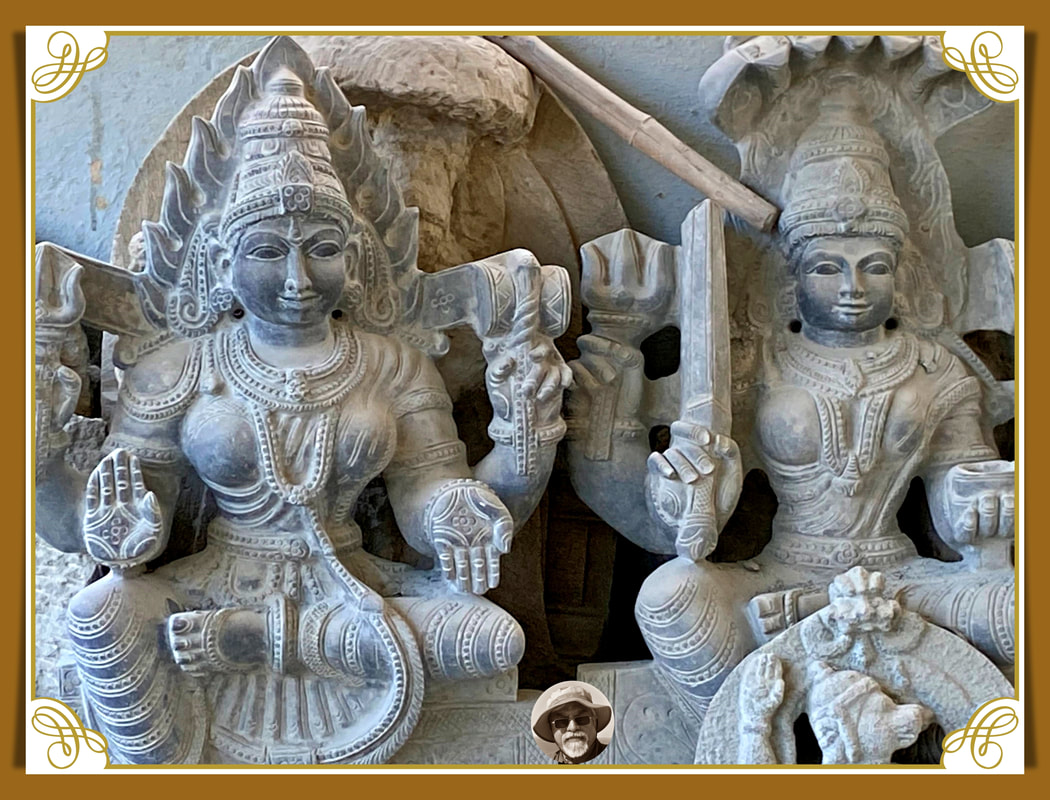|
After savouring the rich architectural heritage of the Ramalingeshwara temple at Avani, we made our way to Shivaripatna. The google map guided us through agricultural lands where slushy and deeply rutted mud roads were a test for driving. The sounds of chisels working on stones greeted us as we reached the outskirts of the village.
Shivaripatna is a small village in Malur taluk of Kolar district. This nondescript hamlet is a well-known place for intricate carvings on granite. Majority of people in the village are Vishwakarmas. The Vishwakarmas, also known as Vishwabrahmins are descendants of the Hindu deity, Vishwakarma. He was considered as the divine architect and deemed to have emerged out of Samudra Manthan. According to another account, Lord Brahma had a son named Dharma and his son Vaastu married Angirasi, and from them, Vishwakarma was born. However, according to the Vishwakarma Purana, he is considered to be a Swayambhu. The legend states that he was the creator of many holy cities like Dwaraka and also crafted numerous weapons for the gods. He had five children, Manu, Maya, Tvastar, Shilpi, and Vishwajna, each one of them specializing in a particular craft. Hence the community comprises five sub-groups: blacksmiths, carpenters, bronzesmiths, stonemasons and goldsmiths. How did this village have such a concentration of Vishwakarma artisans? It is said that during the period of the Ganga Dynasty a ‘shilpi’ named Basulinga Acharya was traveling and spent a night in a dharmashala in Shivarapatna. After cooking food for the night, he took some pieces of charcoal and drew an idol on the wall, which was strikingly beautiful. Next morning when the villagers saw the drawing they were astounded by his skill. The news spread like wild fire and the king got to know about this. He came to the village to meet him, offered a piece of land and asked him to stay in the place and practice the craft. The craftmanship flourished in the village thereafter! Almost every dwelling in the village has a workshop. We slowly made our way from one workshop to another, each one a treasure trove full of exquisite sculptures. In one of the workshops we watched with awe as a middle aged person carefully worked on sculpting an idol. Aware of our interest, he took us around the place and explained the process of making the sculptures in detail. In the process we got to know that he was a Muslim and had been making idols for decades. His father was also in the same profession. He said that he had carved thousands of idols until now, many of them in worship in temples. Although Islam doesn’t propagate idol worship no one from his community questioned him and he has been accepted and continues to be a part of the Vishwakarmas in the village. This was a truly inspiring story in these deeply polarized times and is an enduring testimony to the long cherished syncretic tradition of our country. There has always been a syncretism of religions in India. No couplet I know captures this more succinctly than one by Kabir that I learned as a child and have never forgotten: Moko kahaan dhoondhate bande, Mai to tere paas me; Na Mai Mandir, na Mai Masjid, naa Kaaba Kailash me. (Where dost thou seek me oh devotee, for I am right beside thee; Not in a temple, nor in a mosque, not at the Qaaba, nor on Mount Kailash, shalt thou find me) A few glimpse of our visit at: photos.app.goo.gl/apuMSCPHNEMinnRF7 Feel free to pen your thoughts here…
23 Comments
|
Dr Raguram
Someone who keeps exploring beyond the boundaries of everyday life to savor and share those unforgettable moments.... Archives
May 2024
Categories |

 RSS Feed
RSS Feed